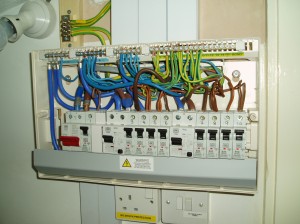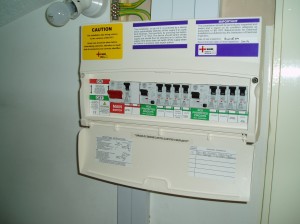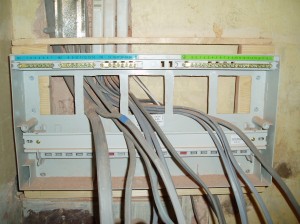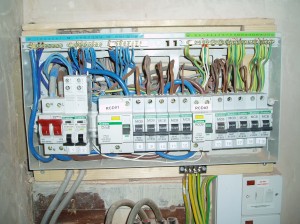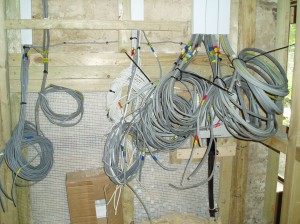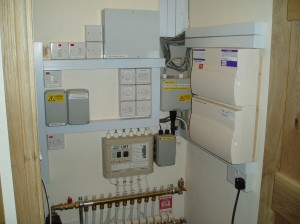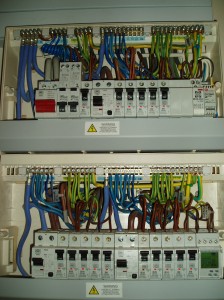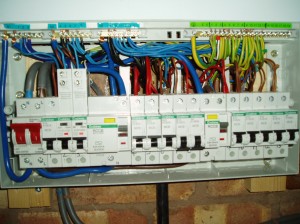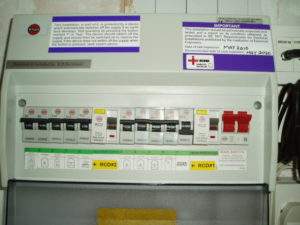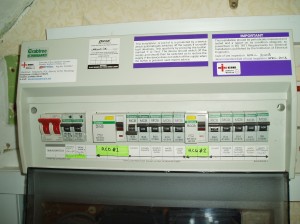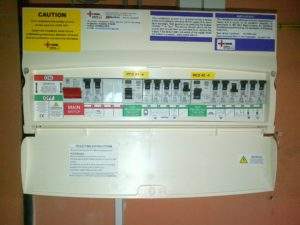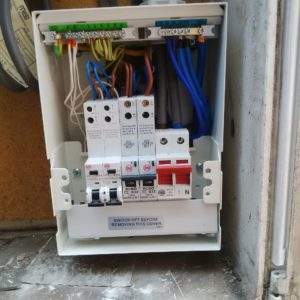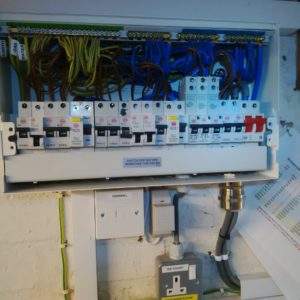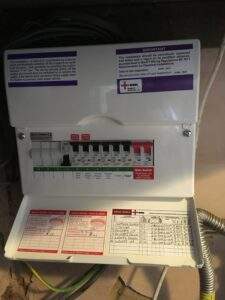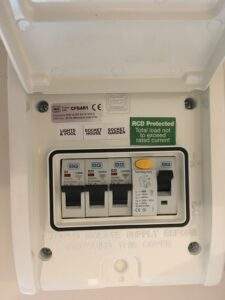The majority of good electrical work is never seen, it is either concealed in walls, floors, trunking, cabinets or other enclosures. All that is visible is the front of an accessory, socket, switch or light fitting etc. and most people know what a socket or a light looks like and others have no interest with the inside of a consumer unit. But for those who are interested here are a few sample images from some of SM Services work. (most good business webpages have some sample work pictures!)
Inside & Outside view of a typical Consumer unit;
Three stages of a typical job in progress;
Cables down a wall prior to plastering and second fixing – then after plaster and accessories have been fitted;
Inside the above stacked consumer unit;
Another consumer unit with its lid off;
Three more typical outside views;
Wiring regulations BS7617:2008 Amendment 3 (2015), which came into effect Jan 2015, had a new regulation 421.1.201 requiring domestic consumer units, (and similar switchgear) to be constructed of non-combustible material. (AKA a metal enclosure). A phasing-in period was allowed up to Jan 2016 where non metal were still acceptable. But all new and replacement consumer units fitted since Jan 2016 should be metal, or an equivalent non combustible material.
A couple of metal units with combinations of RCD and RCBO shock protection, with covers off.
Other metal units with their covers on.
{they don’t look much different to plastic ones!}
-{page end 20June20}-



